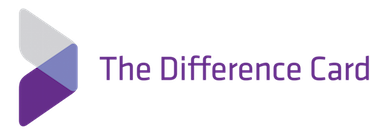On January 7th I am heading to the International Consumer Electronics Show (CES),(Opens in a new window) one of the largest conferences in the world focused on all of the technologies we are not supposed to use while driving or in a dark movie theater or if we want to have a social life that expands beyond our cat. Back in prehistoric times, when I worked in the software field and not healthcare, CES was all about TVs and CD players and things that our kids mostly wouldn’t recognize anymore. Back in those early years the conference was populated largely by tech geeks and dominated by the biggest of the big companies. Today’s CES is a full-on happening with movie and music and sports stars signing autographs and performing;(Opens in a new window) I think it’s pretty weird that you can go there and meet 50 Cent or Pharrell Williams (the other Blurred Lines guy, people) or Tim Tebow and not Bill Gates or Steve Jobs, who were the CES celebrities of old.
CES has also expanded well beyond the boundaries of technology for TV, movies and music to include wireless tech and robotics and fitness and, of course, this year’s new breakout buzzword: the Internet of Things. I am guessing that “Big Data” is feeling so last year right about now. CES also has a pretty significant healthcare technology program these days and this year there are two significant tracks focused here: the Digital Health Summit (Opens in a new window)and the Silvers Summit. (Opens in a new window) I am looking forward to my role at the Silvers Summit, a track focused on the over-age-50 crowd and how they use and want to use technology. I love that they put this on the description of this program: “After all, this is the generation that invented the Internet.” Too Funny. I will be moderating the Home, Sweet Radical Home panel, which will focus on home-based healthcare, safety and related technology for seniors, a very interesting topic.
As for the Digital Health Summit,(Opens in a new window) it is two full days of content about how technology is and will continue to change the delivery of healthcare, the patient experience and everything else from prevention to fitness to death. I note that there is a huge emphasis on “wearables,” by which most people mean health sensing/tracking technologies that are affixed to the body to diagnose, or monitor or treat health conditions. This is another super buzzword for 2014 – wearables. Next up: The Internet of Wearable Things. Mark my words. I should trademark it.
I have been somewhat cynical about the current state of sensors and wearables, not because I don’t think there is potential value in them, but because it requires a willing consumer participant for the programs to work and for any value to be realized. I can’t tell you how many healthcare conferences I have been to where roomfuls of healthcare people who should know better are wearing their FitBitJawboneUpMisFitShineWhateverBracelet while eating high carb foods and drinking soda. When you get to the general population, compliance and awareness are even worse.
However, news flash: I have finally seen a health app that is actually guaranteed to have life saving implications and where consumers are highly motivated to engage in a meaningful way when their sensor alerts them to the dangers they are about to bring on themselves. Ready digital health investors? This is the one. It is based on a serious user-defined problem, it provides a tried and true preventative methodology for avoiding health/life-threatening behavior, and it uses inexpensive, easily accessible technology, at least after the initial infrastructure build. I give you the Surf Life Saving WA Twitter account.(Opens in a new window)
The Problem: Apparently Western Australia is the deadliest place in the world for shark attacks. A 35-year-old surfer killed in Nov. 2013 became the sixth fatality from a shark attack in the region in just two years.
The Solution: Marine researchers have tagged over 320 sharks — including great whites and tiger sharks — with location transmitters to track their movements along the Western Australia coast. Whenever a shark comes within 2km (1.2 miles) of the shore, a computer program sends a tweet with the shark type and location to all surfers who have signed up for the Surf Life Saving WA Twitter account.(Opens in a new window)
The Outcome: Tweet says “shark on the way,” surfer high tails it for the beach and avoids being eaten. Problem solved. Of course you need a waterproof way of getting those tweets, so I assume that a wearable is in order, and preferably one with audio capabilities so it can shout out, “Dude, totally gnarly shark at 5 o’clock!” while said surfer is paddling for the point break.
Now this is a useful application of technology (you can read more about it HERE). And I think it has “platform” written all over it. Imagine if we could miniaturize those tagging devices put on the sharks and place them on all manner of people who we would want to know are headed are way to ensure we avoid the negative health ramifications of actually having to interact with them. Perhaps our friends at MC10 can create a miniature stick-on tracking device, nearly invisible and stuck onto the offending human to be avoided with a simple bump in the hallway (I am hereby coining a new term “appliables”). Then we could set different alerts to signal our FitBitJawboneUpMisFitShineWhateverBracelet that an unfavored business associate/ex-spouse/boss/kid/friend-who-always-asks-to borrow-money/friend-to-whom-you-owe-money is heading your way. I think it would be particularly awesome if you could set the alert to play the theme from Jaws when your own personal shark is approaching.
I challenge anyone at CES to come up with a better application of sensors to health than the Twitter shark app. Feel free to share your crazy ideas and Happy New Year.
Lisa Suennen has spent nearly 30 years as an entrepreneur, venture investor and advisor in the healthcare industry. She currently serves as Senior Managing Director at GE Ventures, leading the firm’s healthcare venture fund. Lisa is also co-founder of CSweetener, a not-for-profit company focused on matching women in and nearing the healthcare C-Suite with mentors who have been there and wish to give back. She is a member of the faculty at the UC Berkeley Haas School of
Business, where for 10 years she has taught classes on venture capital and the changing healthcare economy.
Prior to joining GE Ventures, Lisa operated Venture Valkyrie Consulting for 3 years, advising large corporations around corporate venture capital, new business creation and digital health strategy. Prior to that she spent 15 years as a Partner at Psilos Group, a successful healthcare-focused venture capital firm. Lisa is currently a Board Member of Evidation Health, Health Reveal, Gravie, the Dignity Health Foundation, and Heart To Heart International. She is also on the Advisory Boards of the California Health Care Foundation Innovation Fund, the
American Heart Association Innovation Think Tank, global digital health organization HealthXL and NASA’s Translational Research Institute. Lisa is a Fellow of the inaugural class of the Aspen Institute’s
Health Innovators Fellowship and a member of the Aspen Global Leadership Network. Through her Venture Valkyrie media company, Lisa writes a widely read blog on healthcare and healthcare investing at http://venturevalkyrie.com . She published her
first book in 2013: Tech Tonics, Can Passionate Entrepreneurs Heal Healthcare with Technology, coauthored with Dr. David Shaywitz. Together they also host a popular podcast, also called Tech Tonics, focused on the people and passion at the intersection
of technology and health.
Lisa an M.A. in political science, a B.A. in political science and a B.A. in mass communications, all from the University of California, Berkeley.
This post appears through the MedCity Influencers program. Anyone can publish their perspective on business and innovation in healthcare on MedCity News through MedCity Influencers. Click here to find out how(Opens in a new window).










